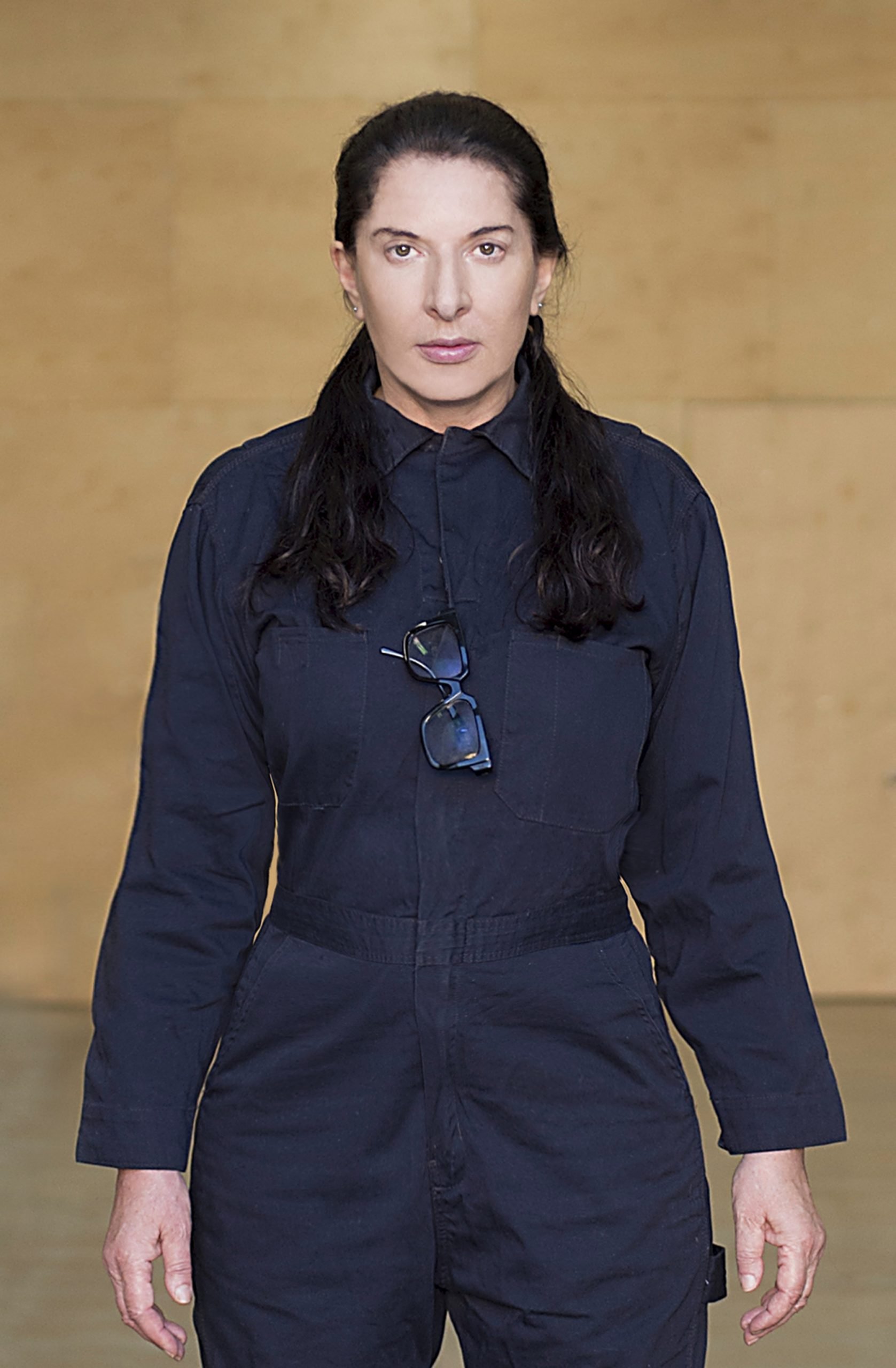
Marina Abramović is about to have her first museum show in China, returning to the nation where the performance artist famously walked the Great Wall to dissolve her partnership with Ulay in 1988.
The exhibition, “Marina Abramović: Transforming Energy,” will open at the Modern Art Museum Shanghai (MAM) in October. But while the 77-year-old Abramović is well known for performing inside museum halls, she is asking visitors to take center stage this time around.
“It’s completely 100 percent interactive,” Abramović said in a virtual press event announcing the show. “I’ve never had a show like this in my entire life.”
“This is perhaps the first time that Marina is encouraging the audience to be the performers,” MAM artistic director Shai Baitel added. “She’s asking the audience, be present. Remove your phone. Be with us. Stay with us.”
Marina Abramović, Shoes for Departure (1991/2017). Courtesy of Sean Kelly Gallery.
It’s the artist’s largest show to date with 150 works, roughly 75 percent of which are being shown for the first time.
That includes “Transitory Objects,” sculptures collectively made from over 6,600 pounds of minerals that invite visitor participation. Abramović—who also touts the anti-aging properties of minerals in pricey skincare products—believes that crystals contain transformative energy.
“Hematite really raises your blood pressure; the rose quartz work on your heart; the clear quartz work on your mind; tourmaline on your liver. All of these things actually have also medical property, scientific property and energy property,” she said. “It is up to the public to discover them.”
The works are made from copper, iron, wood, and Brazilian crystals. By sitting or standing on or beneath the pieces, museumgoers are meant to channel the minerals’ energy. (Trained facilitators will tell visitors what to do.)
Marina Abramović, Copper Bed for Human Use (2012). Photo: Fabrizio Vatieri, courtesy of Sean Kelly Gallery.
“The audience can connect themselves and incorporate their physical being with the objects themselves,” Baitel said. “And they can improve themselves and enjoy the qualities and the goodness the minerals have to offer.”
“I’m using geodes 35 billion years old,” Abramović added. “You can sit on the little chair and look inside the geode like you’re looking inside the stomach of the planet.”
The artist cites her three-month walk across China, titled Great Wall Walk, China (1988) as an inspiration for the series, which draws on Tibetan and Chinese medicine, spiritualism, and healing.
Marina Abramović, Great Wall Walk, China, Marina on the wall (1988). Photo courtesy of the artist.
“There were many different minerals that was in the ground. Each time I walk on that kind of minerals, I have the feeling different energy. I felt different,” Abramović said, noting that she encountered iron-rich hematite and red clay.
She doesn’t necessarily expect visitors to be in tune with the subtle effects of the minerals. The artist once watched a pair of Americans asking each other if they felt anything after 10 minutes with a crystal artwork. They agreed they didn’t, and decided to go get a hamburger.
“It’s very important to actually stay a long time with objects,” Abramović said. “If you want to get the muscles in gym, you don’t get muscles from one training. You get muscles by doing it every day.”
Marina Abramović, Great Wall Walk, China, Marina with people (1988). Photo courtesy of the artist.
The artist is especially excited about giving people the chance to train on sculptures she calls telepathy phones.
“Actually, it could take for anybody four years to learn telepathy, which is so much cheaper than using mobile phone. But nobody do, of course,” Abramović said.
Regardless of whether these pieces work in the way the artist claims, they represent a chance to leave behind works more lasting that an ephemeral performance.
“It’s not that I’m going to be able to perform when I’m 80, 90, 100, whatever,” Abramović admitted. “I have to find the system in which my mission and my legacy can go on. And this is exactly [what I do] with the ‘Transitory Objects.'”
Marina Abramović, Great Wall Walk, China, landscapes and portraits (1988). Courtesy of the artist.
The exhibition will also feature over 1,200 never-before-seen photographs of Abramović’s 1,550-mile journey to meet Ulay. It’s another reminder that decades later, the durational performance piece remains a formative experience for the artist.
“That was epic,” Abramović recalled. “I really fell in love with China.”
“Marina Abramović: Transforming Energy” will be on view at the Modern Art Museum Shanghai October 10, 2024–February 2025.